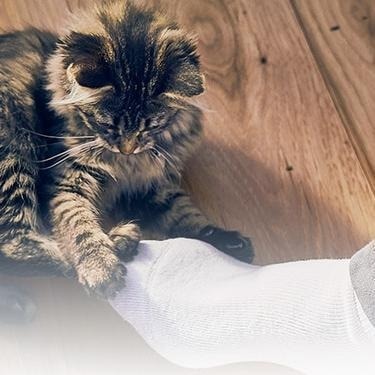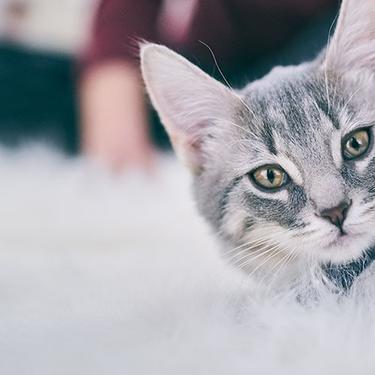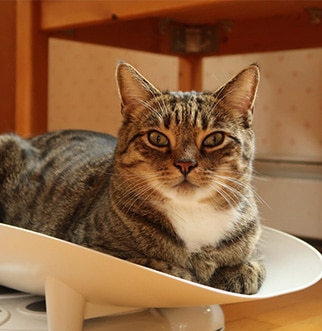
-
Find the right food for your pet
Take this quiz to see which food may be the best for your furry friend.
Find the right food for your pet
Take this quiz to see which food may be the best for your furry friend.
Featured products
 Adult 7+ Perfect Digestion Chicken, Whole Oats & Brown Rice Recipe Dog Food
Adult 7+ Perfect Digestion Chicken, Whole Oats & Brown Rice Recipe Dog FoodScience Diet's breakthrough nutrition supports ultimate digestive well-being & healthy microbiome for dogs age 7+
Shop Now Adult 7+ No Corn, Wheat, Soy Chicken & Brown Rice Dog Food
Adult 7+ No Corn, Wheat, Soy Chicken & Brown Rice Dog FoodSupports energy level and beautiful coat in mature dogs
Shop Now Adult Perfect Weight & Joint Support Chicken Recipe Dry Dog Food
Adult Perfect Weight & Joint Support Chicken Recipe Dry Dog FoodThis weight management and mobility support dog food was created with Hill’s unique understanding of the biology of overweight dogs.
Shop NowFeatured products
 Adult Perfect Digestion Chicken, Barley & Whole Oats Recipe Cat Food
Adult Perfect Digestion Chicken, Barley & Whole Oats Recipe Cat FoodScience Diet's breakthrough nutrition supports ultimate digestive well-being & healthy microbiome
Shop Now Adult Savory Chicken Entrée Cat Food
Adult Savory Chicken Entrée Cat FoodPrecisely balanced nutrition with the delicious taste of savory minced chicken to help fuel the energy needs of cats during the prime of their life
Shop Now Perfect Weight Salmon & Vegetable Canned Cat Food
Perfect Weight Salmon & Vegetable Canned Cat FoodOver 70% of cats lost weight within 10 weeks when fed this nutrition
Shop Now -
Dog
- Dog Tips & Articles
-
Health Category
- Weight
- Food & Environmental Sensitivities
- Urinary
- Digestive
- Joint
- Kidney
-
Life Stage
- Puppy Nutrition
- Adult Nutrition
- Senior Nutrition
Cat
- Cat Tips & Articles
-
Health Category
- Weight
- Skin & Food Sensitivities
- Urinary
- Digestive
- Kidney
-
Life Stage
- Kitten Nutrition
- Adult Nutrition
Featured articles
 The Incredible Science Behind Your Pet's Microbiome
The Incredible Science Behind Your Pet's MicrobiomeLearn what a pet's microbiome is, how it contributes to your pet's gut & overall health, and why nutrition is important in maintaining healthy microbiomes.
Read More Pet Food Storage Tips
Pet Food Storage TipsDiscover how and where to store your dry, as well as canned, dog and cat food. Learn how to find the "best before" dates on all Hill's pet food packaging.
Read More Water
WaterDiscover why water is the most important nutrient for your dog or cat to live a healthy life. Find out how much water your pet should consume each day.
Read More -
Find the right food for your pet
Find the right food for your pet


Common cat behavior problems can drive us bananas, but don't blame your cat. What's often considered bad cat behavior is normal feline instinct. That said, living with a cat can be as frustrating as it is wonderful. Here's how to deal with so-called bad cat behavior.
Jumping on Countertops
Cats instinctively seek high places for lookouts and resting spots. This makes them feel secure and keeps them safe from nosy dogs or other unwanted attention. Countertops may also have yummy food to sample, and cool water from faucets tempts cats to leap to these lofty locations.
- Give them a cat tree, shelf space or other high-rise location taller than your countertops. Include a soft bed and hide treats inside. Cats often choose the highest, comfiest spot. Once they have a better perch, the allure of kitchen counters fades.
- Provide a water fountain. Running water tastes better, so a pet fountain can satisfy the faucet-sipping urge. Change the water frequently.
- Compromise. Why not offer lounge space in the laundry room atop the washer? If your cat enjoys curling up in cool sinks, offer a damp towel as a resting spot.
Once your cat has "legal" lounge areas, make "illegal" spots less alluring to stop these cat behavior problems.
- Lock food inside cupboards out of paw's reach.
- Make danger areas unattractive. Stovetops pose a burn risk to cat paws. Get cheap placemats or paper plates and apply double-sided sticky tape. Position them on each burner to shoo cats away. Some cats dislike the feeling of aluminum foil, so you can try that, too.
Scratching Furniture
Cats scratch to mark territory and relieve stress. Figure out their preferred scratching surface. Does your cat scratch carpet, upholstery or wood? Do they prefer horizontal or vertical surfaces? Where do they scratch? Provide alternatives tailored to your cat's needs to help rescue your furniture.
- Offer one scratch object per cat in the home, plus one to prevent arguing. Cats want their claw graffiti seen by the world. They'll often ignore a scratching post hidden in a back room. Good spots are near windows, hallways, napping spots and food sources. Offer wall hangers, freestanding posts and horizontal scratchers for cats to choose from. You can even make your own DIY scratching post.
- Transition your cat to the legal scratch object. Position the new item in front of the illegal sofa. Spike it with catnip, and drag a feather across the surface to tempt your cat to dig in. Get in on the act by scratching it with your nails. This works especially well with kittens. Praise your cat when they claw at the right spot.
- Make the forbidden target unattractive. Use double-sided tape on the upholstery to make the surface unpleasant. Spray pheromone products that signal "safe territory" on forbidden items. This tells your cat they've already marked there, making them less inclined to scratch again. Place plastic carpet protectors nub side up on top of clawed carpet areas to discourage scratching.
- Wait until your cat regularly uses the right object before removing deterrents. Then, move the approved scratch item to your preferred location a foot at a time over a week's period. Keep their nails trimmed to mitigate damage in case of relapse.


Tasty Tips
Cat Aggression
Defensive aggression, like hissing, happens when cats feel threatened. Pushy cats want their way. They'll challenge other cats over territory with offensive aggression. Proper pet introductions can smooth out these interactions. High-energy kittens indulge in rough play aggression. Some cats learn to use biting to stop unwanted grooming or petting.
Stress increases cat aggression, and so does discomfort from illness or pain. Cats usually bluff with posturing and lots of noise long before they attack, so recognizing this so-called bad cat behavior lets you avoid dangerous situations. Cat bites or attacks, though, call for professional behavioral help. Here are ways to recognize cat aggression problems and diffuse the angst:
- Watch the ears and tails. Cats turn their ears sideways like airplane wings and thump their tails to say "stop the petting." Respect their cues.
- A hiss warns; a growl threatens. Back away from threatening cats and avoid eye contact. Instead, toss treats or toys to lure your cat away from doorways, so you can pass without risking a swat. Give them space to cool down.
- Cats control territory with stares. Provide extra litter boxes and cat trees. They can't guard everything at once.
- Diffuse play aggression with entertaining toys and exercise. Try pheromone products to encourage calm.
- If your cat bites, seek a cat behavior professional.
House Soiling
Hit-or-miss litter box behavior tops the list for cat behavior problems. Besides eliminating, cats use urine to calm themselves with self-scent. They also mark territory by spraying. Stress can increase the urge to mark. Luckily, neutering before sexual maturity stops spraying in up to 90% of cats.
Here are the top reasons cats go outside the litter box and what you can do:
- The litter box is too small. Cats need room to maneuver, so get jumbo-size boxes.
- The litter box is dirty. Scoop religiously. Cats also want one box for solids and another for liquids. Add another!
- One bully cat doesn't want to share. If you have multiple cats, position boxes on different sides of the house or on separate floors.
- Your cat is stressed. Sprinkling urine calms cats down. A new work schedule, new pets or humans, a vacation or rearranging furniture can ramp up cat stress. Learn to recognize stress and calm your cat. Create a routine and stick to it as much as possible.
- Your cat has a medical condition. Cats with constipation or cystitis (inflamed bladder) may blame the box for their discomfort. Arthritic cats find other places to go when climbing into boxes hurts. A new box without painful associations can help. Consult your veterinarian for diagnosis and treatment.
You can't change instinct, and deterrents won't work without a better alternative. Redirecting cats to more appropriate outlets solves many cat behavior problems, saving your furniture and your sanity.


Amy Shojai, is a certified animal behavior consultant, and nationally known authority on pet care and behavior. She began her career as a veterinary technician and is the award-winning author of more than 35 prescriptive nonfiction pet books.
Related products

Science Diet's breakthrough nutrition supports ultimate digestive well-being & healthy microbiome

Over 70% of cats lost weight within 10 weeks when fed this nutrition

Feline Adult Perfect Weight Variety Pack

Precisely balanced nutrition with the delicious taste of savory minced chicken to help fuel the energy needs of cats during the prime of their life
Related articles

Discover which cat toys games your feline friend might like, and how they are great sources of exercise. Explore our library of articles to learn more.

Discover the benefits of Hill's line of kitten foods and how they provide complete and balance nutrition for growing kittens.

Discover how to identify cat sensitive skin and what you can do to help your cat thrive from head to paw.

How do you get a cat to lose weight? Learn all about cat foods for weight loss, including how to choose weight control cat food and exercise tips.

Put your cat on a diet without them knowing
Our low calorie formula helps you control your cat's weight. It's packed with high-quality protein for building lean muscles, and made with purposeful ingredients for a flavorful, nutritious meal. Clinically proven antioxidants, Vitamin C+E, help promote a healthy immune system.
Put your cat on a diet without them knowing
Our low calorie formula helps you control your cat's weight. It's packed with high-quality protein for building lean muscles, and made with purposeful ingredients for a flavorful, nutritious meal. Clinically proven antioxidants, Vitamin C+E, help promote a healthy immune system.

